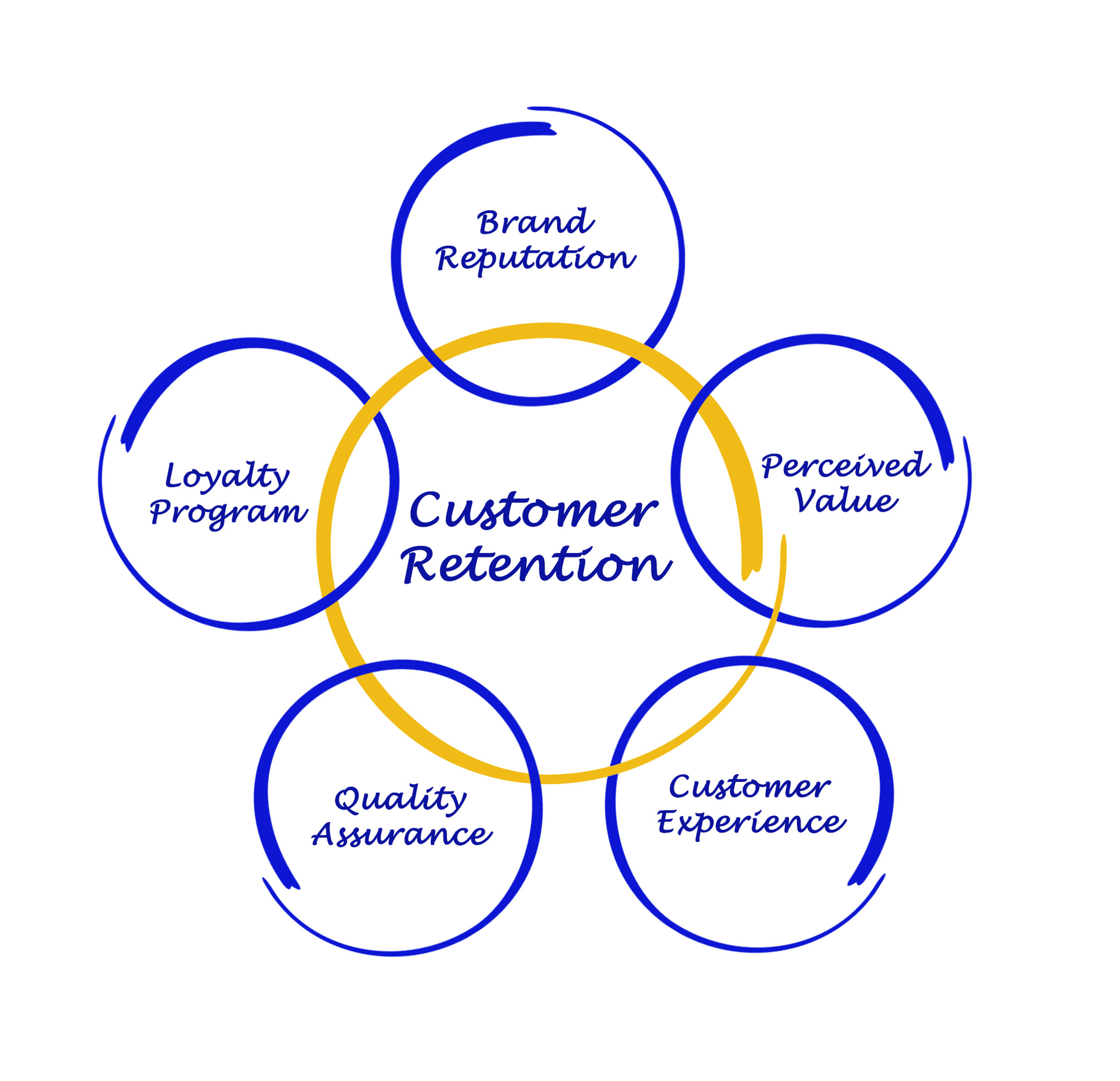As recession fears rise, so does the investment in technology
In an economic recession, it’s more important than ever to be smart about how you spend your money.
Technology can help you do that by providing tools and services that can save you money, help you make more money, help you stay connected to your clients, and help your team stay more connected to each other. Although no two recessions are the same, the way to prepare for an economic downturn doesn’t change.
Technology investments can be your best friend during a recession. Keep your eyes open for opportunities, automate and streamline processes, stay connected with the people who matter most, and monitor key economic indicators. With a little planning and effort, you can weather any economic storm.
1. USE YOUR DATA TO CREATE A CONTINGENCY PLAN (JUST IN CASE YOU NEED IT)
 Most leadership teams meet on a regular basis to review the business financials. If a recession is looming, it is a very good idea to use this data to put together a staged contingency plan.
Most leadership teams meet on a regular basis to review the business financials. If a recession is looming, it is a very good idea to use this data to put together a staged contingency plan.
Technology tools can be used to keep tabs on the company’s financials on a real-time basis. Dashboards can be implemented so that all necessary individuals in a business have real-time access to critical financial information. Tools like Microsoft’s Power BI allow a company to gather information from different data sources to power these insightful dashboards.
IDENTIFY POSSIBLE REDUCTIONS
The first step in building a contingency (hardship) plan should be to identify possible places in the budget that could be trimmed or eliminated. The idea with any of these reductions is that they will be temporary and will most likely be added back into the budget following the recession.
Possible reductions could include:
- A reduction in staff (as this is typically a significant percentage of the monthly spend)
- Reduced employee perks (lunches and snacks in the office, staff clothing, …)
- A temporary pay-freeze
- Temporary elimination of company travel
- Pause on company-sponsored training
- Reduction in company-sponsored perks (gym memberships, automobile reimbursements …)
Once these possible budget reductions are identified, they need to be prioritized and placed in the order in which they will be implemented if the recession hits and the business is negatively affected.
SET TRIGGERS FOR REDUCTIONS TO BE IMPLEMENTED
After the reductions are identified and placed in rank order, the team needs to identify the triggers that will initiate the reductions to be implemented. These triggers might be:
- % of decreased revenues
- NET profits falling below a specified amount
- EBIDTA falling below a specified %
Using data, dashboards, and tech like Power BI, a leadership team can follow these triggers and be ready to implement defined reductions when these trigger thresholds are met.
RESTORE THE REDUCTIONS AS SOON AS POSSIBLE
Again, these hardship reductions and changes are designed to be temporary. Using the same tools, the leadership team can continue to monitor the company’s financial performance through the recession. As the economy recovers and starts to climb out of the recession, the leadership team can use the same triggers to restore any/all the budget restrictions as the company recovers.
2. CUSTOMER RETENTION IS CRITICAL
 It is vital that companies have an intentional plan to retain current customers when faced with a possible recession or financial turbulence. Businesses might decide to cut back on travel and face-to-face meetings to save funds, but thanks to technology, they can still stay connected with customers and clients using video conferencing, VoIP, and other tools.
It is vital that companies have an intentional plan to retain current customers when faced with a possible recession or financial turbulence. Businesses might decide to cut back on travel and face-to-face meetings to save funds, but thanks to technology, they can still stay connected with customers and clients using video conferencing, VoIP, and other tools.
CONNECT WITH CLIENTS
Video conferencing to connect with customers can play a vital role in maintaining strong and healthy relationships with current clients. Business Leaders understand the great costs associated with acquiring new customers, so keeping existing customers satisfied is always important for a business. This is especially important in tough economic times.
Video conferencing allows a company to keep your customers engaged and can provide a personal touch that would otherwise be missing.
VoIP phone systems are scalable, affordable and can help businesses save money during a recession. VoIP systems allow for users to use their cell phones for business communications … allowing for seamless connection to clients during tough times.
Social media provides another very economical way to stay connected with customers while staying within budget. With platforms like Twitter and Facebook, businesses can now provide company updates and communications with customers. Businesses use these platforms to engage with customers, allowing them to foster relationships as well as increase brand awareness.
3. SEE NEW OPPORTUNITY
 Stronger companies that are properly prepared can truly thrive during tougher economic times. Weaker reactive companies will really struggle during tough times. These companies will have a difficult time maintaining key relationships with current customers. These customers will start looking for alternative companies to work with … and this creates great opportunity for well-organized companies.
Stronger companies that are properly prepared can truly thrive during tougher economic times. Weaker reactive companies will really struggle during tough times. These companies will have a difficult time maintaining key relationships with current customers. These customers will start looking for alternative companies to work with … and this creates great opportunity for well-organized companies.
Weaker businesses will turn inward during tough times. Stronger companies will see this as an opportunity and will use their resources (and advanced technologies) to grow during tough times.
FIND WAYS TO PLAY OFFENSE
The right digital initiatives will allow businesses to play digital offense. Technology can position a business strategy and prepare it for any eventuality. Investing in essential sectors, using data-driven tactics to optimize marketing campaigns to stay ahead of the competition, and utilizing technologies such as automation and analytics are all key strategies for success when it comes time to weather an economic storm. With the right plan in place, businesses can become resilient and come out stronger on the other side of a recession.
COVID CHANGED THE WORLD
COVID was a great example of this. Some companies have invested in video conferencing and collaboration tools like Microsoft TEAMS. When COVID hit the USA, these companies were prepared and were able to continue to nurture relationships with their clients and customers. Even though they could not visit their customers in person, they could continue to engage through video meetings.
Additionally, these companies were able to send their teams home to work remotely. This allowed these companies to maintain their activities as their competition struggled to try to reactively put together technology systems. COVID was incredibly tough for our country, but many businesses thrived during these tough times.
Another strategy is to focus on new prospects who might be more recession-proof such as essential services like healthcare, energy, food production, banking/finance, and telecommunications. Introductions to new customers in these sectors can help your business thrive during tough economic times and may provide great and unexpected opportunities for growth.
A Few Additional Thoughts about Thriving during a Recession …
MEASURE PRODUCTIVITY
 Deploying technology to measure productivity can help trim unnecessary costs and create greater utilization of labor costs.
Deploying technology to measure productivity can help trim unnecessary costs and create greater utilization of labor costs.
Every penny is important during a recession, so implementing technology that measures the productivity of staff can make a huge difference.
Identify baseline metrics for every employee and track these metrics daily, weekly, or monthly. Many technologies are available that allow for real-time display of these metrics on dashboards that can be used by managers or displayed openly in the office for all to see and measure against.
INVEST IN TECH, DON’T JUST SPEND MONEY
Investing in the right technology can help a business become recession-proof. It can ensure that you stay competitive with your competitors and keep your head above water during a downturn. Investing in tools that provide insight or allow for remote work can reduce operational costs without sacrificing quality and reliability.
AUTOMATE WHERE POSSIBLE
Automation is real for all businesses today … not just larger enterprise organizations. Automation can be an important key for improving business efficiency; using automation to manage mundane tasks will free up time for more important activities.
Organizations should look at their business processes to identify areas where tasks are repeated weekly, daily or multiple times per day. It is common that these tasks can be automated using technology already included in many software platforms a company uses.
This automation allows employees to be much more productive and the organization to generate greater profits … which is especially important in a recession.
KEY METRICS WILL HELP PREDICT THE FUTURE
During an economic downturn, keeping an eye on key metrics is important to get an idea of what’s ahead. GDP and interest rates are good indicators of how the economy is doing. If GDP starts (or continues) to decline, that’s usually a sign that economic hardship is on the horizon.
Other key indicators include unemployment, inflation, supply chain issues, and retail sales. By tracking these indicators, business leaders can better understand where the economy is headed and make decisions accordingly.
 Businesses can thrive during a recession using technology if they can manage to stay ahead of the curve.
Businesses can thrive during a recession using technology if they can manage to stay ahead of the curve.
Real-time monitoring of current events and financial data will allow leaders to make decisions without needing to apply knee-jerk actions to unexpected situations.
Finally, consider using digital marketing strategies such as SEO optimization and content marketing. These tactics can help you reach more customers with your message and build brand recognition without having to spend much money.
By using technology to your advantage, you can remain competitive and even gain an edge during a recession. With the right strategies in place, you can make sure that your business is recession-proof and ready to weather any economic storm.
Technology can be a great resource during a recession. From using technology to automate processes and cut costs to using data-driven marketing tactics, you can use technology to thrive during tough economic times.
Automating manual processes can help reduce overhead, freeing up capital for other projects or initiatives. Additionally, using data-driven marketing tactics to target potential customers and keeping up with industry trends can help your business stay ahead of the competition in a struggling economy.
BECOME AGILE AND FLEXIBLE
To survive in a recession, businesses need to stay agile and flexible. By using technology and automation, businesses can quickly adapt their products or services in response to market conditions while reducing overhead costs associated with manual processes like hiring additional staff.
The key to using technology in a recession-proof business is implementing strategies that will help you succeed in the long term. You can create a flexible and resilient business model capable of weathering almost any economic storm by automating and streamlining tasks, eliminating travel costs, and using marketing automation tools.
RESPOND TO CHANGE
Recessions come with change. Technology can help you respond quickly to changing economies and customer needs. For example, using artificial intelligence or machine learning to monitor real-time changes in a business’s production or revenue generation can help them stay ahead of the curve when it comes to adjusting during a recession.
ADAPT AND ADJUST
You may need to adjust how you use technology based on the market conditions. For example, if demand for your product or service is decreasing, using technology-driven automation can help you save costs by reducing manual labor. On the other hand, if demand is increasing, using data analytics tools can give you insights into what customers want so that you can adjust your marketing strategy accordingly.
STAY ON TOP OF TRENDS
In order to use technology effectively in a recession, it’s important to stay on top of trends. Gather information from expert sources and use analytics tools to track customer preferences and market conditions. This will give you an edge over competitors who may not be using technology or have access to up-to-date data.
KEEP UP WITH TECHNOLOGY
It’s also important to keep up with the latest technologies that are available for businesses. Investing in the right technology early on can save you money in the long run and make your business more resilient during a recession. Take advantage of the tools available to you and use them strategically to stay ahead of the competition.
FINALLY
A recession doesn’t have to be a time of hardship. With forward-thinking planning and effort, you can use technology to thrive.
Keep your eyes open for opportunities, automate and streamline processes, stay connected with the people who matter most, and monitor key economic indicators.
By using technology wisely, you can weather any economic storm.





